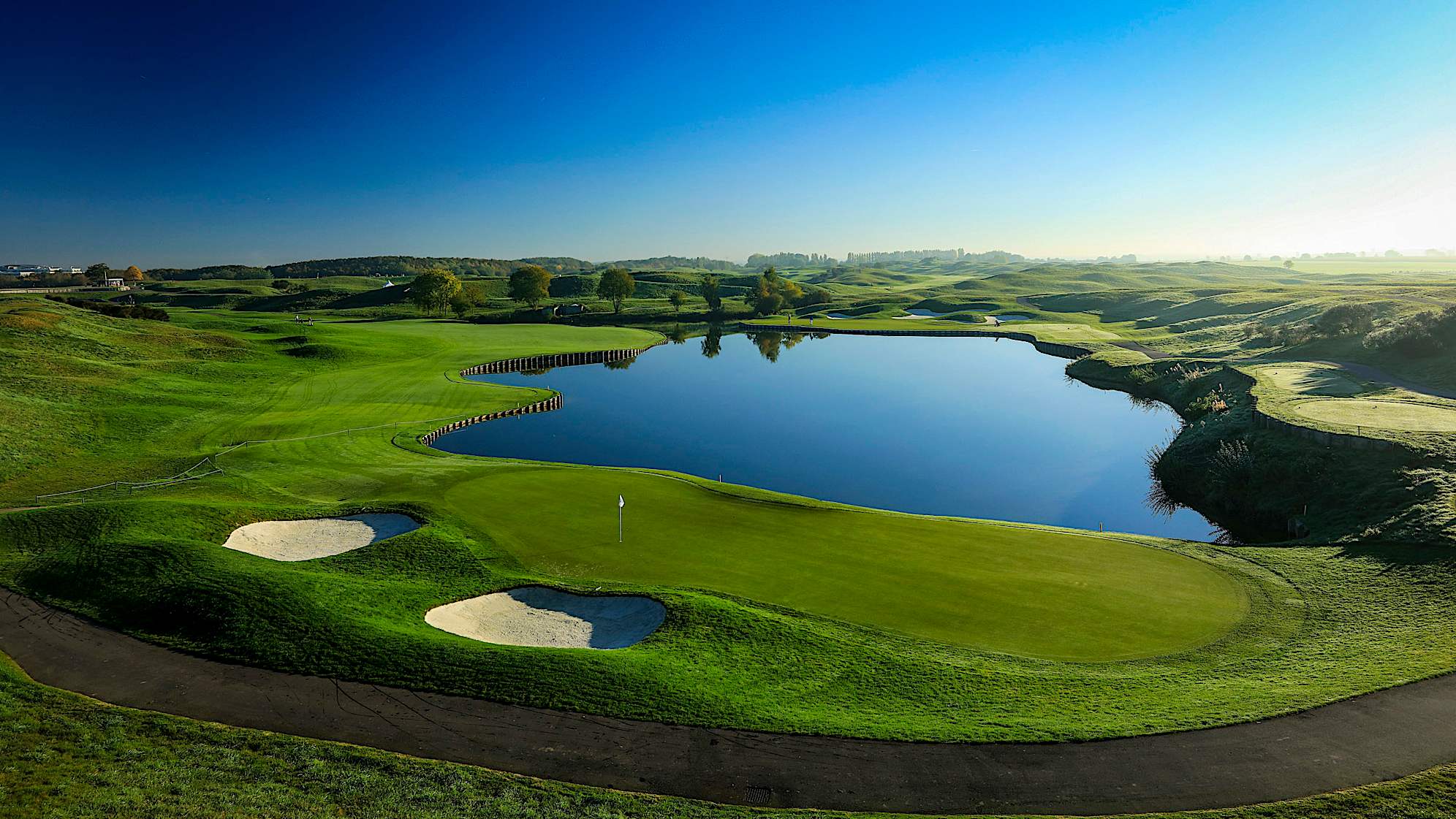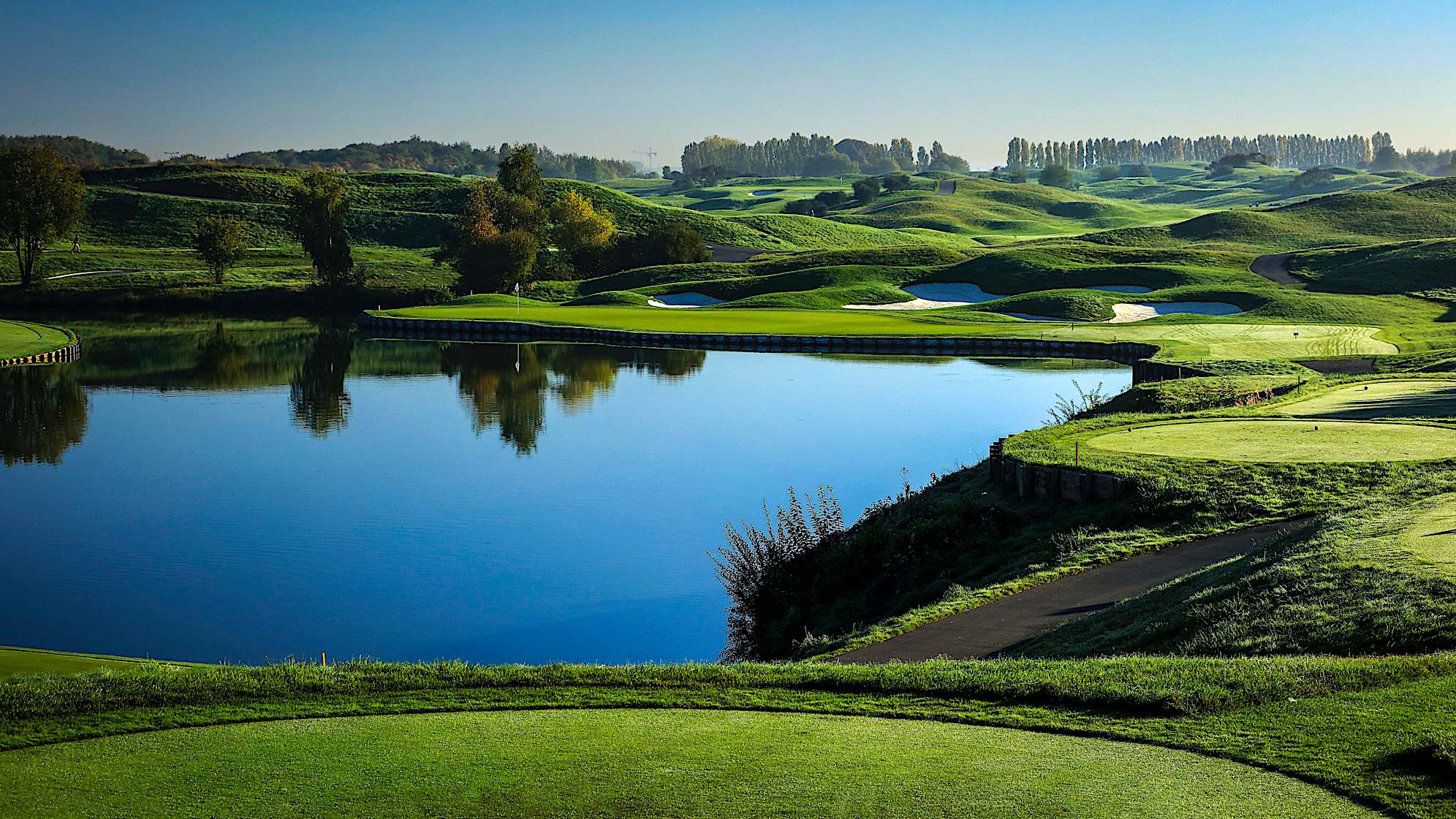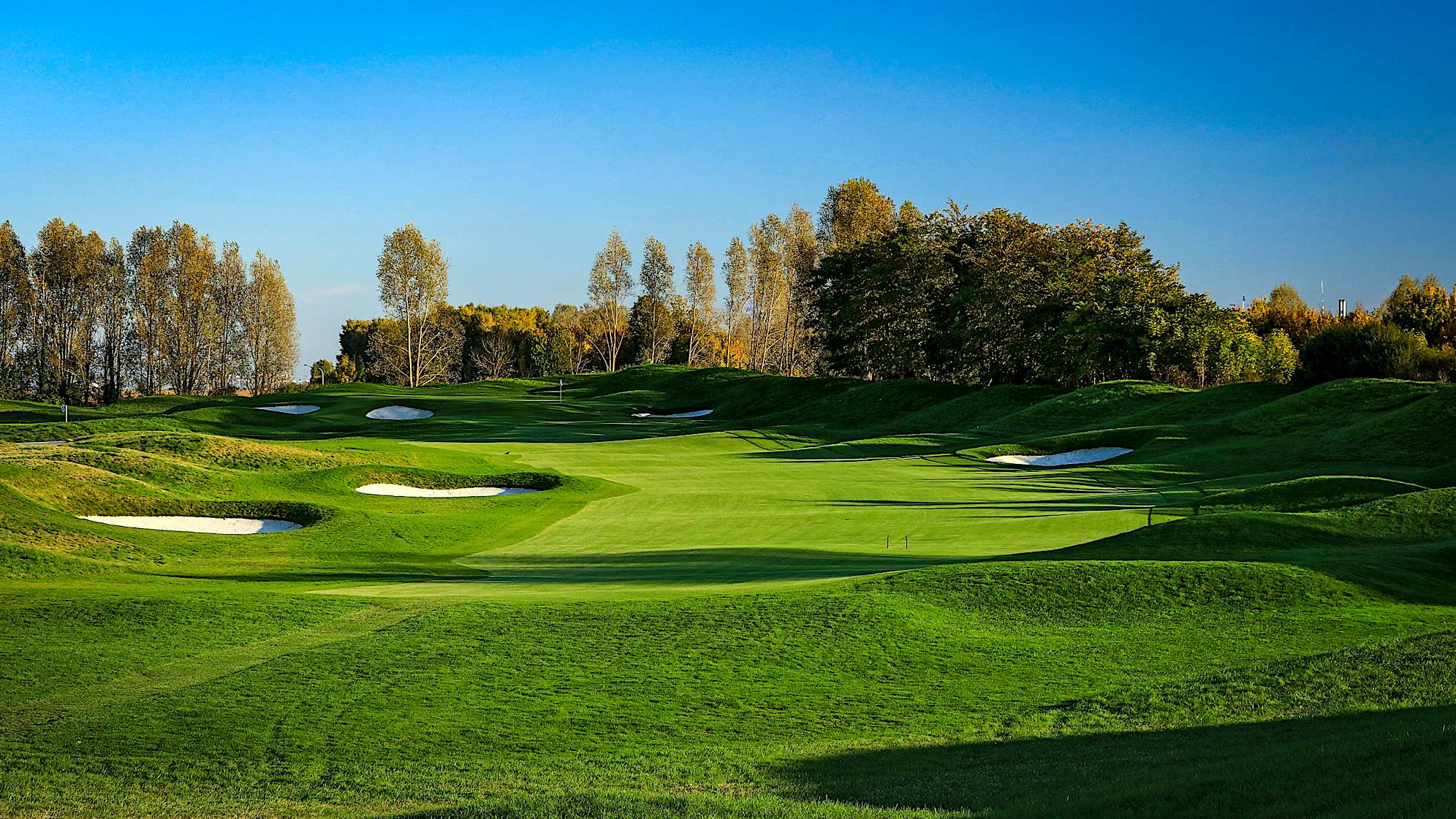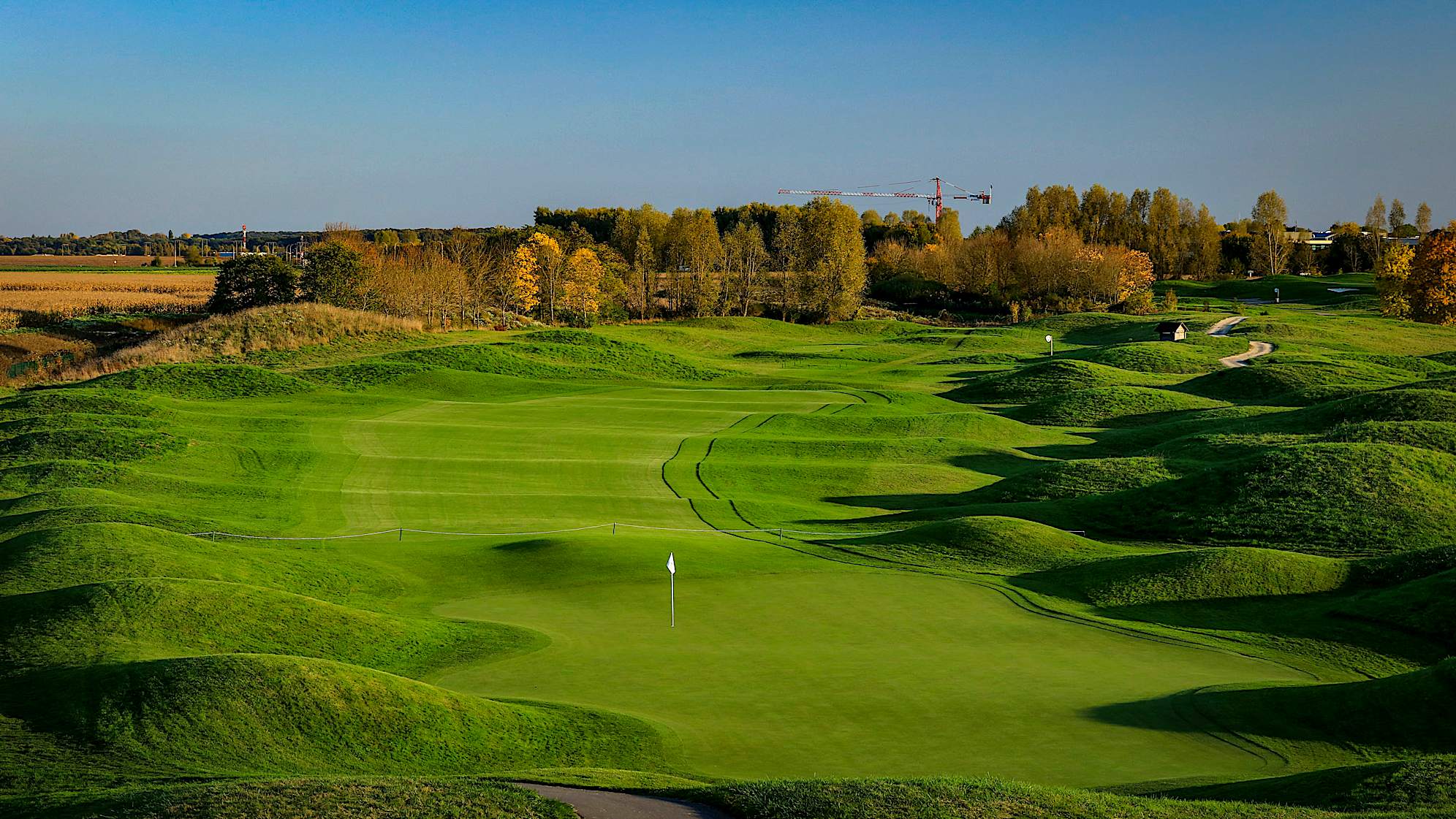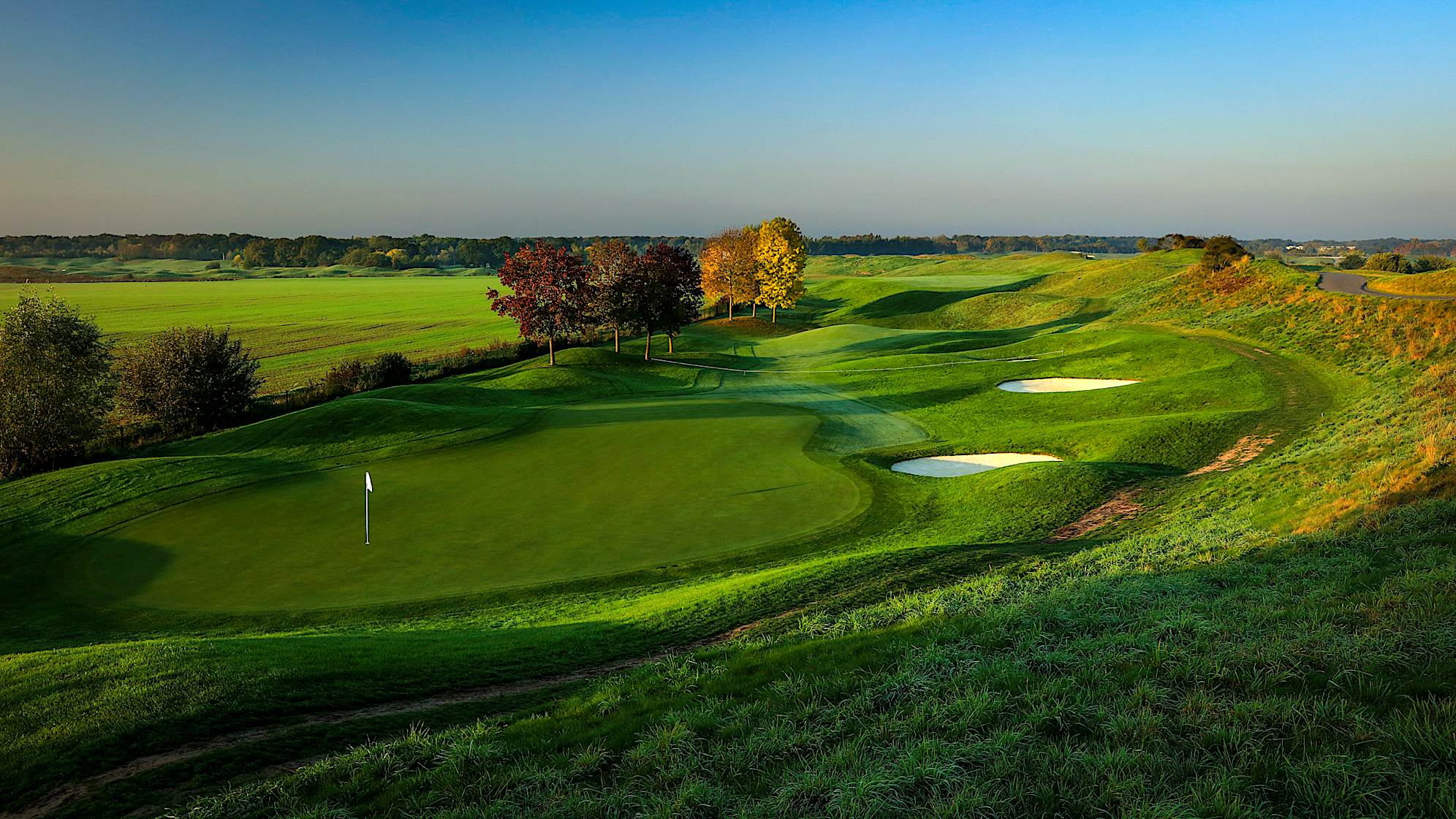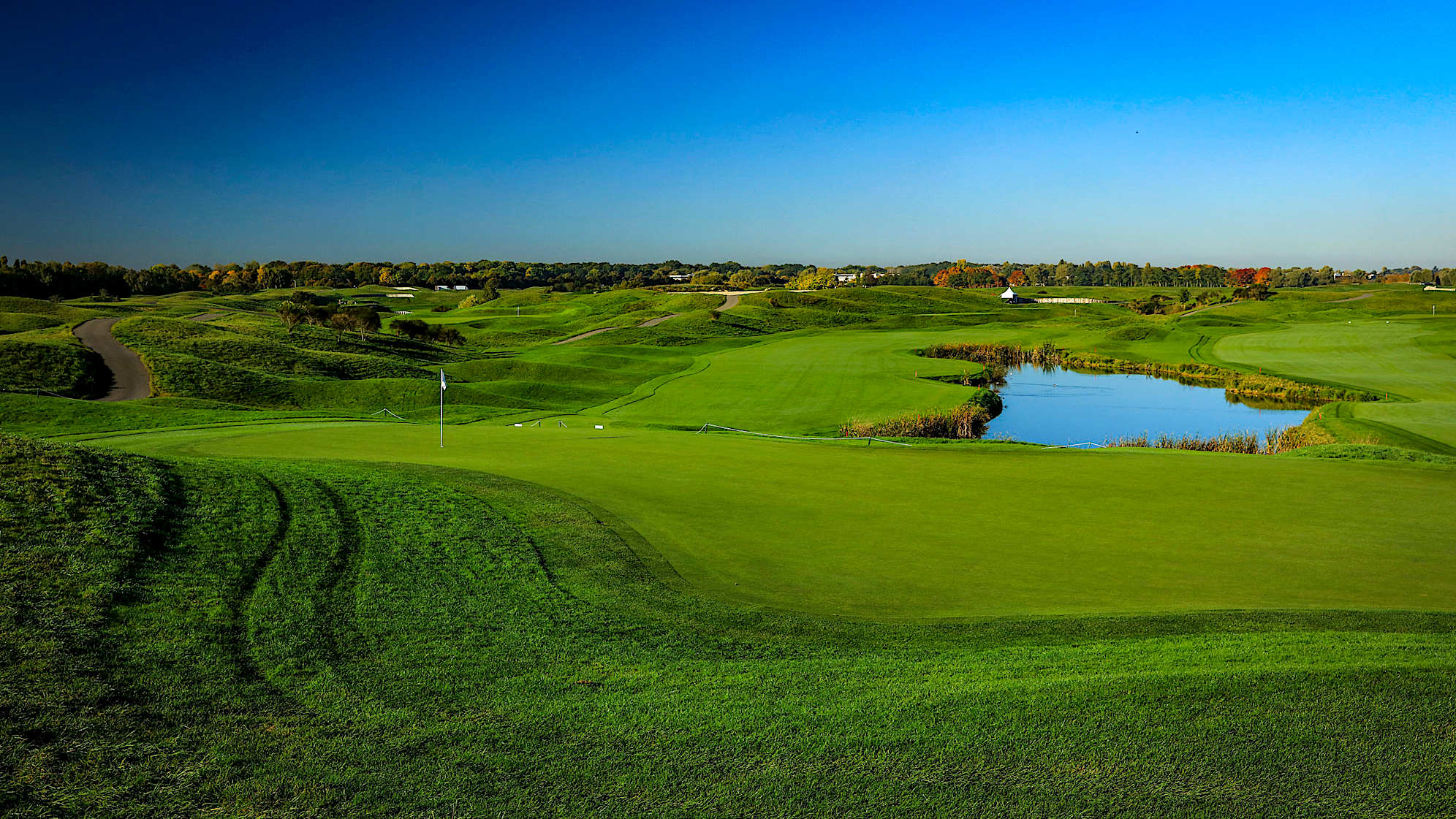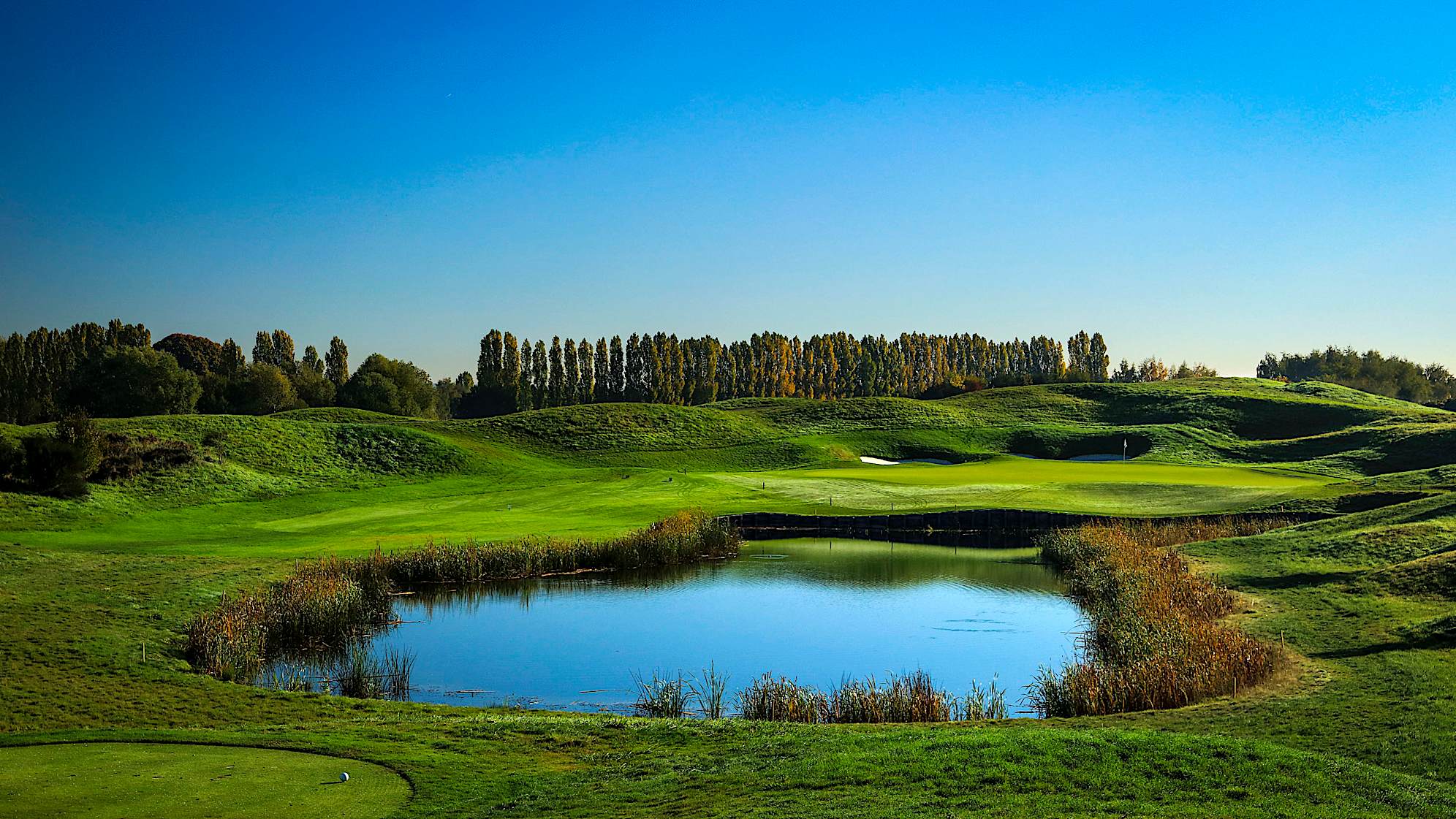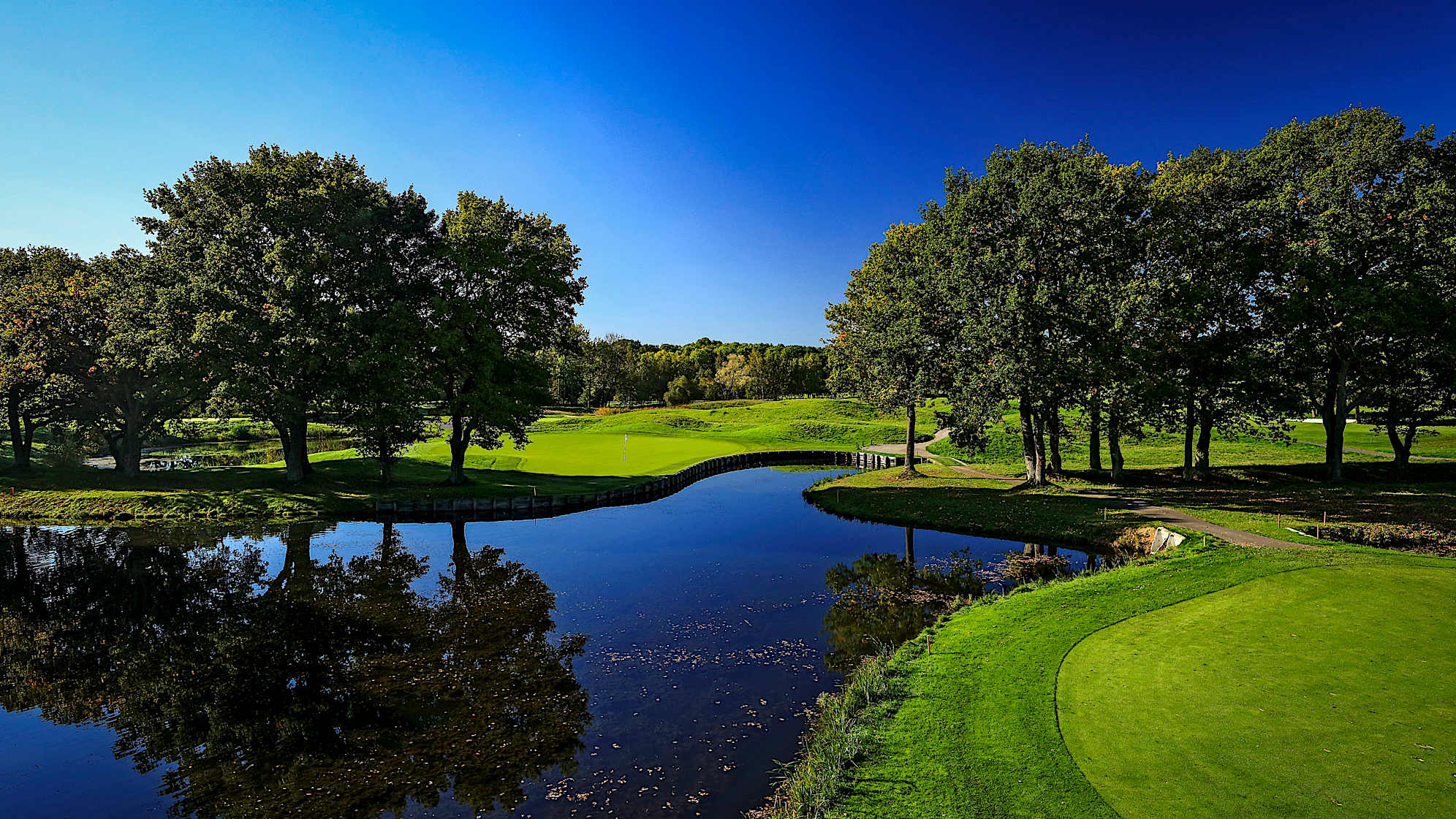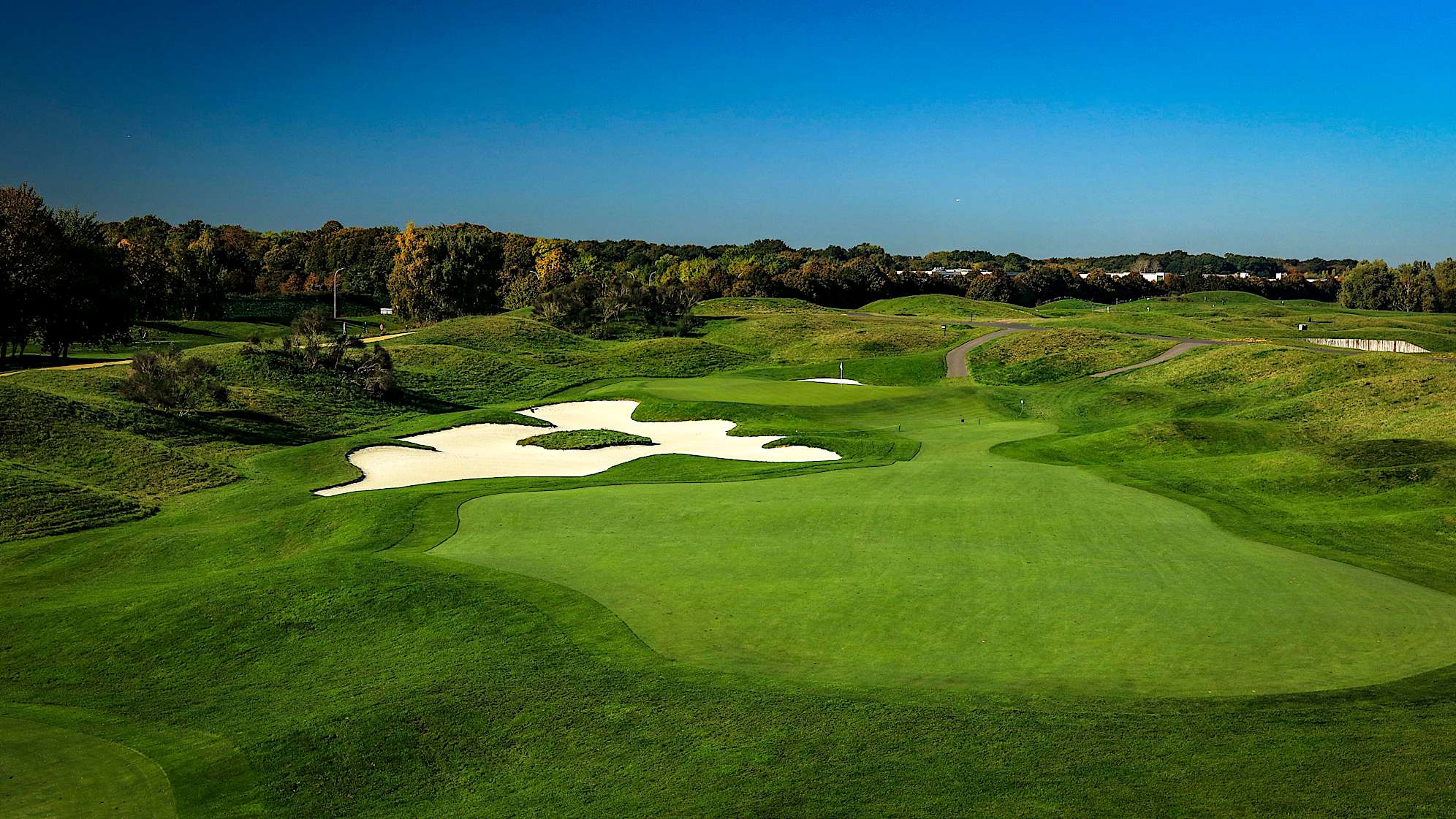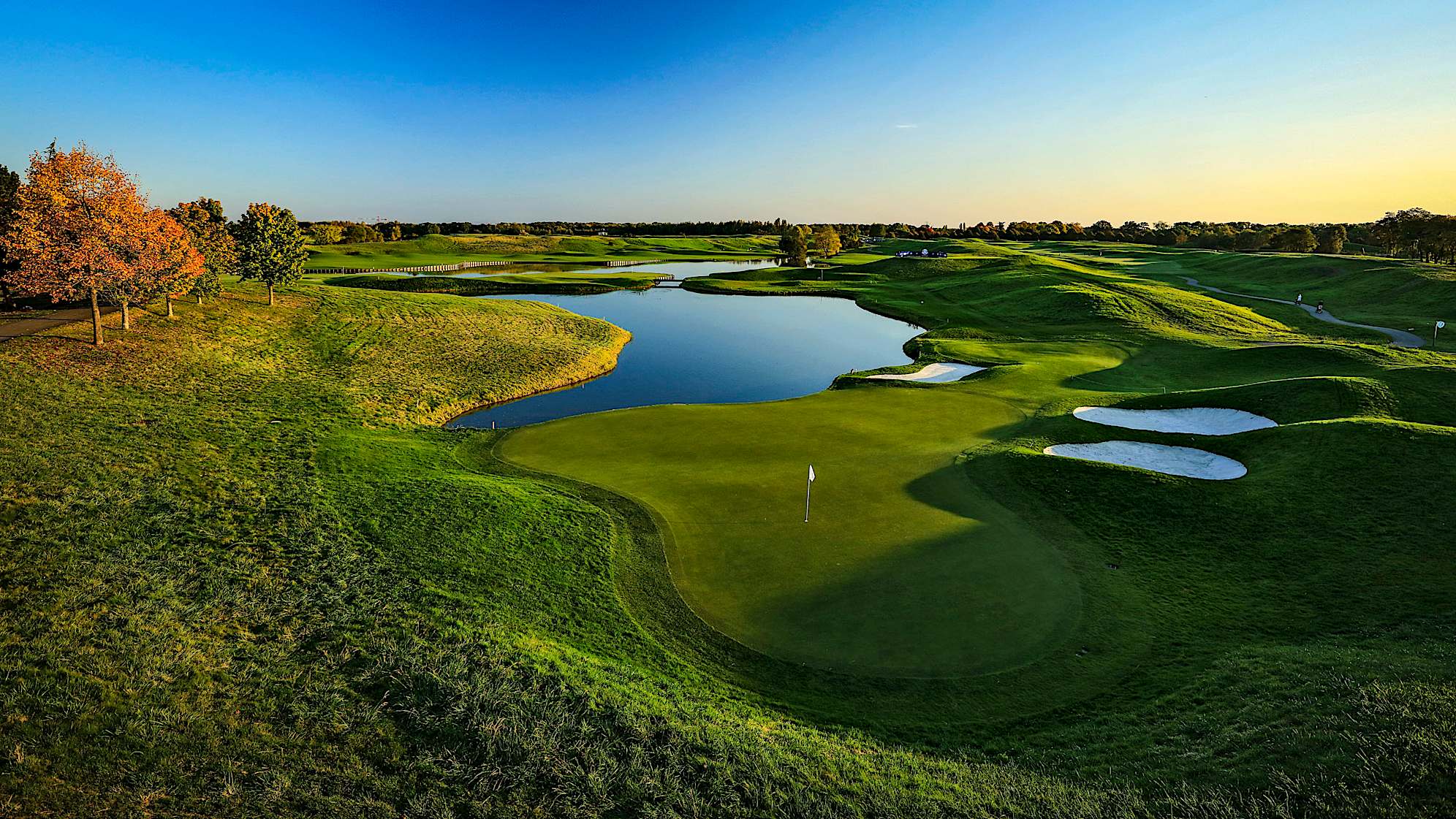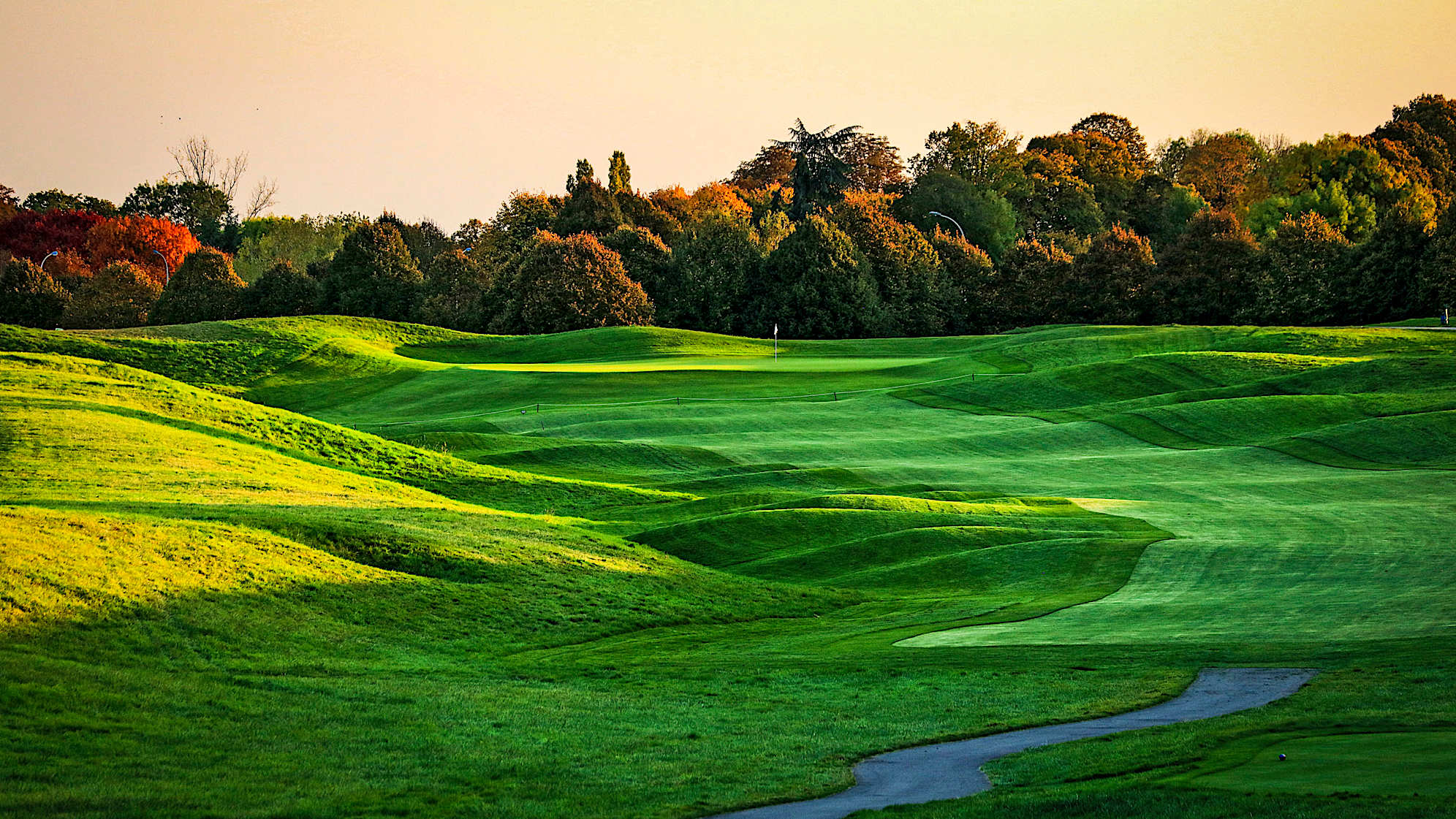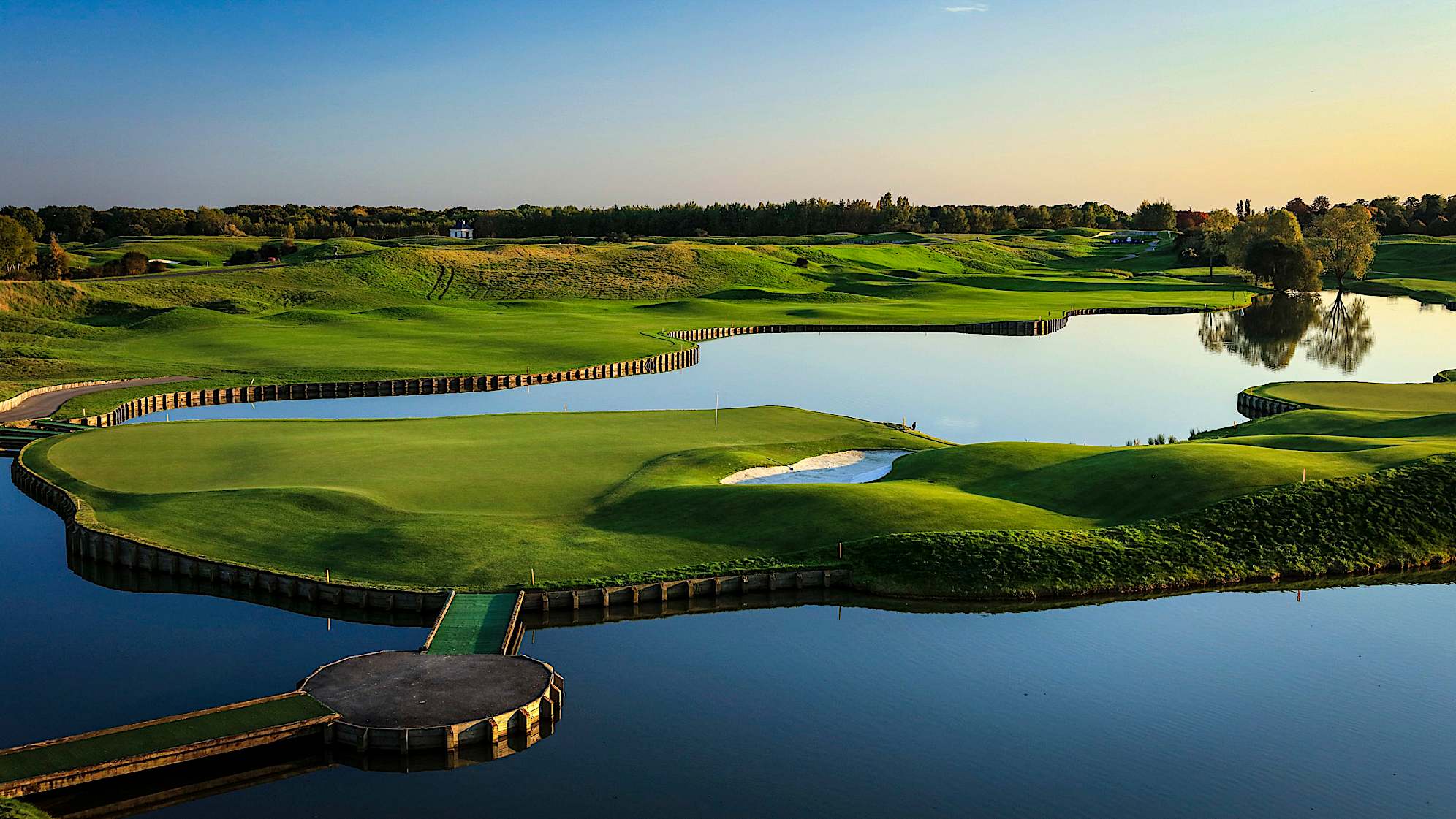Nine things to know: Olympic golf at Le Golf National
10 Min Read
Written by Bradley S. Klein
It’s time again for one of the game’s truly international events – Olympic golf. This time it’s back to Paris, where Olympic golf debuted in 1900 with both men’s and women’s competition. The men’s competition was held again in 1904 in St. Louis but not the women’s. Then golf was off the boards for 112 years until Rio de Janeiro in 2016 and Tokyo in 2021 (originally scheduled for 2020).
Here are nine things to know for Olympic golf, contested across the next two weeks at storied Le Golf National’s Albatros Course.
1. Organization
Olympic golf is coordinated by the International Golf Federation, based in Lausanne, Switzerland. This year’s rendition entails coordination with 38 National Olympic Committees, representing 32 different countries for men and 33 for women. Two fields, each 60 players strong, will compete. The stroke play competition is 72 holes each, Aug. 1-4 for men followed by Aug. 7-10 for women. At stake are medals, pride and national honor but no prize money – a rarity among the professional ranks these days.
“The Olympics for me is sport in its purest form,” said England’s Tommy Fleetwood, who will make his Olympic debut this week and won the 2017 Open de France at Le Golf National.
“I think it’s the most amazing event in the world. I think now for kids growing up that will watch the Olympics, watch golf in the Olympics … kids will start dreaming a bit.”
2. Location
This year’s setting is Le Golf National, a private club and luxury hotel property in the town of Guyancourt, 18 miles southwest of the Eiffel Tower and 26 miles southwest of the Olympic Village. The 345-acre parcel is home to the championship Albatros Course, which will be the venue for the Olympic competitions. The facility, owned by the French Golf Federation, also includes the 18-hole Aigle Course and the nine-hole, par-32 L’Oiselet Course.
Of the country’s 810 golf courses, Le Golf National is regularly rated among the top 10. The Albatros Course was the scene of the 2018 Ryder Cup, where the European team won decisively over the American squad, 17.5-10.5. Designed in 1990 by Hubert Chesneau and Robert von Hagge and extensively renovated in 2015 by European Golf Design, Le Golf National is perennial home to the DP World Tour’s Open de France, which will be played there for the 30th time this Oct. 10-13.
3. Field
The 60-player fields are the result of a balancing act in qualifications that have two broad goals. The aim is to assemble the best golfers in the world from as many countries as possible. On the women’s side, 13 of the top 15 players on the Rolex Women’s World Golf Rankings are in the field, headlined by 2021 Olympic gold winner and world No. 1 Nelly Korda. The other former medal winner in the field is Lydia Ko of New Zealand, world No. 20 and winner of the silver medal in 2016 and the bronze in 2021.
The men’s lineup includes 10 of the top 15 players on the Official World Golf Ranking, including four from the U.S.: Scottie Scheffler (No. 1), 2016 Olympic gold medalist Xander Schauffele (No. 2), Wyndham Clark (No. 5) and Collin Morikawa (No. 6). The only other previous medalist in the men’s field is C.T. Pan from Chinese Taipei, who took bronze in 2021.
4. Course character
Le Golf National literally arose from level farm ground to the point where it now presents 45 feet of elevation change. It took quite a few truckloads of material to create the effect of rolling terrain. Construction back in the late 1980s entailed 300 truckloads a day for three years, hauling in material from various building projects in downtown Paris – about 270,000 truck trips in all.
The effect today is of a stadium-style setting capable of accommodating 30,000 spectators per day, variously distributed on mounds or in stands. As of two weeks before the start of play, six of the eight competition days were sold out, with organizers expecting capacity crowds each day. As was evident during the 2018 Ryder Cup, the area immediately south of the clubhouse is particularly suitable for football stadium-style cheering, thanks to the amphitheater of mounding overlooking looming water hazards at the start and end of the round – Nos. 1, 2, 15, 16 and 18.
The effect of any round here, whether casual or world championship level, is of a distinct rhythm and pace that moves from ominous target golf to a more relaxed stage for meadowland play (Nos. 3-14) and then back again to tightly defended waterfront shot-making.
5. Course setup
As the perennial home of the DP World Tour’s Open de France, Le Golf National regularly adapts to championship-level setups. Course superintendent Lucas Pierre, six years at the helm here, is aided by a full-time staff of 38 employees and will have the additional input of 56 experienced volunteers for the Olympics.
The putting surfaces are on the large size, running from 6,500 to 8,600 square feet. They will be clipped and trimmed to 0.13 inch (3.3 mms). While precise Stimpmeter speeds are always a matter of last-minute adjustment, Kerry Haigh, the PGA of America’s chief championship officer and one of the officials advising on course setup, reports simply that that upon opening day the greens will be rolling “at Olympic speed.”
The biggest issue for players will simply be playing to and staying on the 24.7 acres of ryegrass/fescue fairways; they tend to meander their way alongside ponds or are contour mowed in a slightly wavy fashion that narrows down at the landing areas and readily feeds into fairway bunkers, ponds or fields of fescue in the deep rough. The one saving grace of their shaping is that they are relatively flat, thus providing comfort for approach shots and more incentive to hit them, even if that means laying up off the tee with less than a driver.
The first half of the year has been far wetter than normal for northern France, so the ryegrass/fescue roughs, groomed in step-cut fashion at 2.5 inches, 3.3 inches and 4.7 inches of height, will be dense and gnarly and thus difficult to escape from. In short, the premium here is on hitting fairways.
6. The long and short of it
Le Golf National will play 7,174 yards, par 71 for the men’s competition and 6,374 yards, par 72 for the women’s competition. The sole difference in par comes at the watery 18th hole, which shifts from a long par 4 to a short, strategic par 5, and will provide plenty of drama in front a grandstand seating 1,700.
The overall yardage difference per gender can be understood in several ways. The 800-yard gap corresponds to an 11% decrease in overall yardage; the average driving distance on the PGA TOUR (299 yards) is 14% further than on the LPGA (257 yards). This would suggest that the overall distance gap at Le Golf National still leaves the women with an effective playing distance that is longer than for the men.
But the par difference is a kind of balancing act. The men’s Olympic golf competition will be played at 101 yards per stroke of par (7,174 divided by 71), while the women’s competition will be played at 88.5 yards per stroke (6,374 divided by 72). That’s a 12.4% decrease in effective stroke per par, which offsets slightly the distance gap on tee shots.
At peak performance levels, female pros average roughly 40 yards shorter on their drives and 25 yards shorter than male pros with the same iron in hand – a 65-yard difference average per hole. If carried through over 18 holes, that’s basically a 1,170-yard gap – more than the 800 yards in the Olympics. What all that means for watching the Olympics is that the women will be coming into these holes, on average, with about two clubs longer for their approaches than the men, even playing from tees that are 800 yards shorter. In other words, on a par 4 where the men hit driver/9-iron, the women will be hitting roughly 7-irons.
Concern about the women hitting into a minefield of divots produced by the men a week prior have generally not proven to be a real issue – think of the U.S. Open at Pinehurst in 2014, Rio in 2016, or Tokyo in 2021. For one thing, the limited play – 60 rounds per day – is less than an average day at these courses, certainly less than a full-field tournament. With aggressive sanding, there is plenty of time for divot recovery. Moreover, proper placement of teeing grounds will help the women land in areas closer to the green than the men, in fresh fairway fields. It’s all part of modern course setup.
7. ‘Tough but fair’
After an opening-round 71 at the 1991 Open de France, the event’s first playing at Le Golf National, Nick Faldo described the course as “tough but fair.” That sentiment has endured for three-plus decades, with single digits sometimes enough to win the Open de France (Alex Noren, who will represent Sweden this week, won in 2018 at 7-under), but also the chance to go low; the last three winning scores have fallen between 12- and 16-under. That includes Guido Migliozzi (16-under in 2022), who will compete for Italy this week.
Tom Kim, who will represent the Republic of Korea this week alongside Byeong Hun An, is among those looking forward to the challenge.
“I think it's going to be a really good test of golf for everyone,” Kim said Monday. “You really can't fake it around here. You have to play some really good golf around here to win medals and I think it's going to be a great test.”
8. Third hole
Lots of interesting holes out there, particularly given the openness of the site to the prevailing wind from the west. At the par-5 third hole, 556/499 yards long, the fairway is 17 feet below the teeing grounds and sets up with a favoring wind from the right. Ponds down the entirety of the right side are the main danger here. An ideal tee shot favors the left side, thanks to two looming hazards up front of the green that work in harmony to protect the right-side approach – a 40-foot-tall oak in front of a large greenside bunker. There’s little chance of a ground game runup, so players going for the green must come in boldly from the air.
9. 18th hole
Le Golf National’s finishing hole will play as a 471-yard par 4 for the men’s competition and 447-yard par 5 for the women’s competition. A very precision-oriented finishing hole, perennially one of the toughest in relation to par at the Open de France. Water lines the entire left side, and a minefield of pot bunkers intrudes down the right side, so there’s no choice left but to hit the fairway. The prevailing wind, from left center, provides a bit of cushion against the ball as it heads towards the water. The green effectively forms an island (sharing a bit of land with the 15th green) and presents water across the front of the entrance as well as entirely behind, so distance judgment is crucial. It helps that this is the second largest green on the course. Still, trying to hold it from out of the rough or any of the seven pot bunkers on the tee shot is a delicate matter. The setting here heightens the drama – the ultimate in theatrical, stadium golf spectating.

Drone flyover of closing hole at Le Golf National
It will be fun to watch.
Le Golf National – Albatros Course scorecard
Men (Aug. 1-4) / Women (Aug. 7-10)
| Hole | Par | Yardage (men's) | Yardage (women's) | Par |
| 1 | 4 | 419 | 386 | 4 |
| 2 | 3 | 210 | 154 | 3 |
| 3 | 5 | 556 | 499 | 5 |
| 4 | 4 | 486 | 421 | 4 |
| 5 | 4 | 405 | 371 | 4 |
| 6 | 4 | 380 | 359 | 4 |
| 7 | 4 | 457 | 434 | 4 |
| 8 | 3 | 208 | 161 | 3 |
| 9 | 5 | 579 | 466 | 5 |
| 36 | 3,702 | 3,251 | 36 | |
| 10 | 4 | 375 | 351 | 4 |
| 11 | 3 | 174 | 144 | 3 |
| 12 | 4 | 433 | 408 | 4 |
| 13 | 4 | 414 | 371 | 4 |
| 14 | 5 | 552 | 478 | 5 |
| 15 | 4 | 405 | 377 | 4 |
| 16 | 3 | 168 | 150 | 3 |
| 17 | 4 | 480 | 397 | 4 |
| 18 | 4 | 471 | 447 | 5 |
| 35 | 3,472 | 3,123 | 36 | |
| 71 | 7,174 | 6,374 | 72 |

